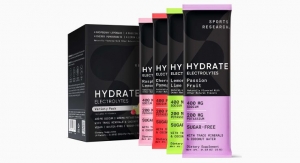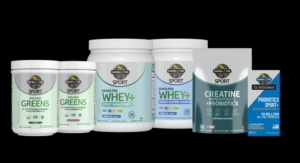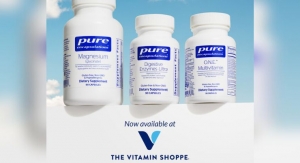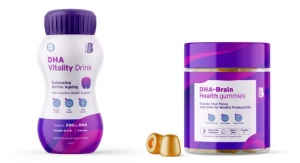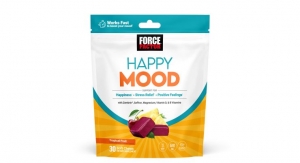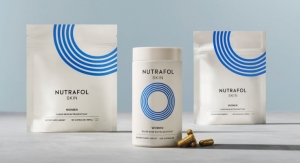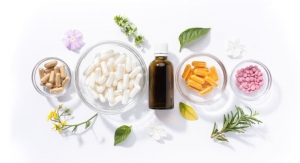By Mike Montemarano, Associate Editor 09.13.21
Layn Natural Ingredients is launching a new Sophora japonica extract, SophorOx, which is standardized to support a healthy inflammatory response thanks to its standardized levels of polyphenols.
Specifically, the extract is standardized to 90% flavonoids, including quercetin, rutin, isorhamnetin, kaempferol, genistin, and genistein, according to Jim Roza, Layn’s chief scientific officer.
“Stevia has certainly been Layn’s claim to fame, but we’re much more than that. One of our core competencies is polyphenols, and when you count the number of teas and botanical extracts that we have, we have over 100 products,” Roza said. “We’re one of the global leaders in Sophora japonica, with about 25% of its global supply, from which many of our polyphenols are derived. We’ve studied polyphenols for a long time, and know a great deal about the benefits that these polyphenols can provide regarding their antioxidant and anti-inflammatory properties.”
“With the pandemic, and knowing that people who are in poor health quite often suffer because of the fact that there’s too much oxidative stress occurring in their body, as well as chronic inflammation, we were led to look at many of our different polyphenols,” Roza continued. “We know how each one works individually, and decided to look at a formulation of Sophora japonica extracted into a proprietary form, and test it for its antioxidant and anti-inflammatory properties, which was the impetus for us to move forward with an in vitro study to show proof of concept.”
Currently, SophorOx is supported by a proof-of-concept in vitro study as well as an in vivo animal study, both conducted with contract researcher Vedic Lifesciences, which concluded that the extract, at doses equivalent to 500 mg per day for an average adult, significantly reduced several markers of oxidative stress in exercised mice compared to placebo. Both studies are currently slated for publication in the near future, according to Layn.
Specifically, SophorOx was shown in the in vitro study to significantly inhibit six pro-inflammatory and reactive molecules linked to oxidative stress, including: 8-Isoprostane, a biomarker of lipid peroxidation; MDA, which is derived from PUFA peroxidation in cells; 8-OHdG, a marker of DNA damage; C-reactive protein, a common marker of systemic inflammation; Interleukin-1 beta, a marker of pro-inflammatory cytokine production; and Interleukin-6, a pro-inflammatory cytokine produced in immune responses.
Additionally, the company is seeking to conduct a human clinical trial, the design for which is still under review. “Of course, we’d like to take things beyond proof-of-concept and efficacy in lab animals,” said Roza. “I’m in the process of working with a life science company to develop a human study involving mildly obese individuals, who are known to have higher amounts of visceral fat. They typically experience higher levels of oxidative stress and inflammation and would be a good model to test this ingredient in a human clinical study.”
As a botanical ingredient, plenty of expertise regarding the harvest conditions of Sophora japonica is necessary to achieve the standardization needed for clinical efficacy, Roza said. “We take the buds of the plant before they bloom when they are most abundant in polyphenols and these flavonoids, and that’s when we do the extraction. This ingredient is naturally-occurring and is naturally-sourced,” Roza said.
Consumer Needs and Delivery Platforms
SophorOx, Roza said, has plenty of versatility and can be featured in a range of delivery formats.
“Healthy agers want to be able to live life to the fullest, and could really benefit from this ingredient as a standalone or alongside other polyphenols, vitamins, and minerals,” he said. “I think it’s also an important ingredient for millennials, who are aware that the population is aging and that they might want safeguards. Another group would be athletes – whether you’re a weekend warrior or someone who is a runner or a weightlifter.”
While regular exercise is important, it does create oxidative stress and inflammation, Roza said. “SophorOx could work well as a post-workout ingredient. Gamers, workers, and students are also increasingly exposed to high levels of blue light, and antioxidants are very important to mitigating its effects. Lastly, I’d say that this ingredient could be useful for people with allergies. Quercetin, which is a major component of the ingredient, has been shown to be helpful in allergic responses. We’re generally positioning this product as one that is helpful to maintain a healthy inflammatory response. Inflammation raises a red flag for many people when it’s talked about, and many people see any inflammation as bad which is not the case. It becomes problematic when the response goes awry and becomes chronic.”
SophorOx can be applied to powders, capsules, and softgels, Roza said, and can be emulsified in order to appear in bars, beverages, gummies, and potentially topical dermal applications.
Mike Montemarano has been the Associate Editor of Nutraceuticals World since February 2020. He can be reached at MMontemarano@RodmanMedia.com.
Specifically, the extract is standardized to 90% flavonoids, including quercetin, rutin, isorhamnetin, kaempferol, genistin, and genistein, according to Jim Roza, Layn’s chief scientific officer.
“Stevia has certainly been Layn’s claim to fame, but we’re much more than that. One of our core competencies is polyphenols, and when you count the number of teas and botanical extracts that we have, we have over 100 products,” Roza said. “We’re one of the global leaders in Sophora japonica, with about 25% of its global supply, from which many of our polyphenols are derived. We’ve studied polyphenols for a long time, and know a great deal about the benefits that these polyphenols can provide regarding their antioxidant and anti-inflammatory properties.”
“With the pandemic, and knowing that people who are in poor health quite often suffer because of the fact that there’s too much oxidative stress occurring in their body, as well as chronic inflammation, we were led to look at many of our different polyphenols,” Roza continued. “We know how each one works individually, and decided to look at a formulation of Sophora japonica extracted into a proprietary form, and test it for its antioxidant and anti-inflammatory properties, which was the impetus for us to move forward with an in vitro study to show proof of concept.”
Currently, SophorOx is supported by a proof-of-concept in vitro study as well as an in vivo animal study, both conducted with contract researcher Vedic Lifesciences, which concluded that the extract, at doses equivalent to 500 mg per day for an average adult, significantly reduced several markers of oxidative stress in exercised mice compared to placebo. Both studies are currently slated for publication in the near future, according to Layn.
Specifically, SophorOx was shown in the in vitro study to significantly inhibit six pro-inflammatory and reactive molecules linked to oxidative stress, including: 8-Isoprostane, a biomarker of lipid peroxidation; MDA, which is derived from PUFA peroxidation in cells; 8-OHdG, a marker of DNA damage; C-reactive protein, a common marker of systemic inflammation; Interleukin-1 beta, a marker of pro-inflammatory cytokine production; and Interleukin-6, a pro-inflammatory cytokine produced in immune responses.
Additionally, the company is seeking to conduct a human clinical trial, the design for which is still under review. “Of course, we’d like to take things beyond proof-of-concept and efficacy in lab animals,” said Roza. “I’m in the process of working with a life science company to develop a human study involving mildly obese individuals, who are known to have higher amounts of visceral fat. They typically experience higher levels of oxidative stress and inflammation and would be a good model to test this ingredient in a human clinical study.”
As a botanical ingredient, plenty of expertise regarding the harvest conditions of Sophora japonica is necessary to achieve the standardization needed for clinical efficacy, Roza said. “We take the buds of the plant before they bloom when they are most abundant in polyphenols and these flavonoids, and that’s when we do the extraction. This ingredient is naturally-occurring and is naturally-sourced,” Roza said.
Consumer Needs and Delivery Platforms
SophorOx, Roza said, has plenty of versatility and can be featured in a range of delivery formats.
“Healthy agers want to be able to live life to the fullest, and could really benefit from this ingredient as a standalone or alongside other polyphenols, vitamins, and minerals,” he said. “I think it’s also an important ingredient for millennials, who are aware that the population is aging and that they might want safeguards. Another group would be athletes – whether you’re a weekend warrior or someone who is a runner or a weightlifter.”
While regular exercise is important, it does create oxidative stress and inflammation, Roza said. “SophorOx could work well as a post-workout ingredient. Gamers, workers, and students are also increasingly exposed to high levels of blue light, and antioxidants are very important to mitigating its effects. Lastly, I’d say that this ingredient could be useful for people with allergies. Quercetin, which is a major component of the ingredient, has been shown to be helpful in allergic responses. We’re generally positioning this product as one that is helpful to maintain a healthy inflammatory response. Inflammation raises a red flag for many people when it’s talked about, and many people see any inflammation as bad which is not the case. It becomes problematic when the response goes awry and becomes chronic.”
SophorOx can be applied to powders, capsules, and softgels, Roza said, and can be emulsified in order to appear in bars, beverages, gummies, and potentially topical dermal applications.
Mike Montemarano has been the Associate Editor of Nutraceuticals World since February 2020. He can be reached at MMontemarano@RodmanMedia.com.


